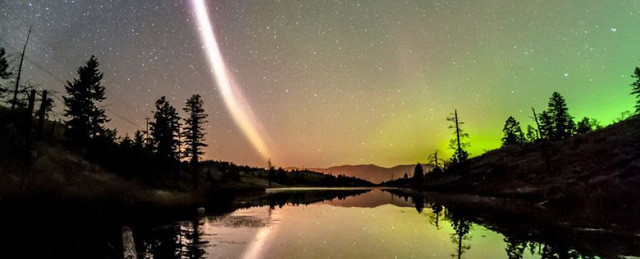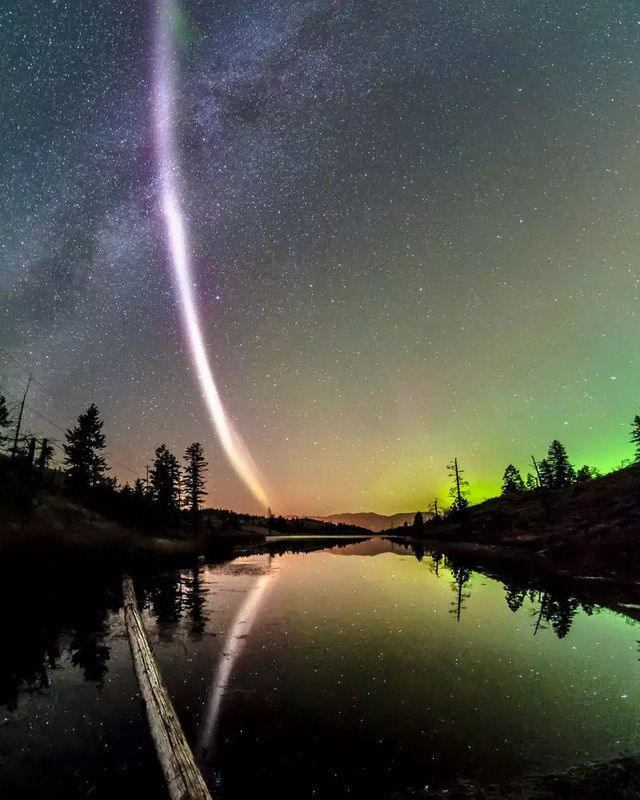Hi Steve, a beautiful new aurora phenomenon has just been discovered!
Those who discovered it named this mysterious phenomenon according to . an animated film.
Science is not a joke! It was a serious person who would say that, and no one would stop scientists from having fun after many years of study and months of research.
The good news is that they are still happy with the job, happier that they are better at naming their discoveries. Take a break from Boaty McBoatface (explained below), by a group of aurora observers who have named an aurora phenomenon "Steve". For no reason, for them, the name Steve is perfectly suited to assign a mysterious phenomenon thanks to the high light of the sky.

Before you think that the name Steve could come from a famous physicist, Professor Stephen Hawking or theoretical physicist Steven Weinberg stopped, by the Facebook group Alberta Aurora Chasers - Aurora Aurora Chase. confirm that they put Steve under an animated movie. It's the movie Over the Hedge, when the animals in the movie decide to name the fence Steve to make it no longer too scary.
But there is nothing scary in the strange aurora phenomenon. The pictures of Steve show that it is a strip of flashing light on the Northern Hemisphere, thought to be a phenomenon of the proton aurora type.

"Please introduce yourself, my name is Steve".
You may be more familiar with a light-like aurora like a strip of silk across the sky, caused by charged particles pulled down to Earth by magnetic fields, glowing when colliding with the atmosphere. Because electrons carry electricity into many different gases, we will see that the aurora has many different colors.
Protons can also do what electrons do, but unlike electrically charged particles, the wavelength created when protons collide cannot be seen with the naked eye. Physicist Eric Donovan from the University of Calgary, Canada understands this difference, so he thinks the photographs are not proton aurora, they are a completely different phenomenon.
Combining the information obtained from the time and place of Steve and the mission of Swarm from ESA, Donovan began to analyze the anomalies of this aurora phenomenon.
Aurora is called Steve here.
" As the satellite flies straight past Steve, the parameters from the electric field measuring device show very clear changes ," Donovan said. " The temperature at 300 km from the ground increases by about 3,000 degrees Celsius and the parameter shows that a range of gas is 25 km wide flowing westward at a speed of 6 km / s (21,600 km / h), the speed of both sides this gas range is only 36 km / s " .
Donovan and the research team have some guesses about this phenomenon, but they will keep it a secret until it is certain who Steve is (what is the phenomenon) before publishing his research results.
"It turns out Steve is a very common phenomenon, but we haven't discovered it before. Fortunately, today we have the help of ground astronomers, satellites, easy access to information. more than ever before and a team of 'scientists' in any household participated in the study , " Donovan said excitedly.
Research forces come from astronomers, amateur space researchers are helping a lot for exploration in general. You must have heard that a mechanic had just discovered a new star system after watching a science television show
And in the end, the name Steve may even mean! One person from the Alberta Aurora Chasers group said that Steve could be an abbreviation for Strong Thermal Emission Velocity Enhancement.
- STEVE - aurora appears for the first time with light purple
- Beautiful aurora in the Lewis Island area
- Aurora is on Christmas
- Beautiful aurora covers the famous Mackinac Bridge
- Virtual aurora phenomenon in Russia
- Eyjafjallajokull's wrath faded under the aurora
- Rare aurora phenomenon occurs in the US
- Bright light of aurora
- See the beautiful north aurora from the biggest solar storm
- Solar storm creates a brilliant aurora for the earth
- Video: Beautiful Northern Aurora from the universe
- Beautiful aurora at Saturn's north pole
 'Fine laughs' - Scary and painful torture in ancient times
'Fine laughs' - Scary and painful torture in ancient times The sequence of numbers 142857 of the Egyptian pyramids is known as the strangest number in the world - Why?
The sequence of numbers 142857 of the Egyptian pyramids is known as the strangest number in the world - Why? History of the iron
History of the iron What is alum?
What is alum? The first 3D eyes fitted to humans: Glitter like real eyes
The first 3D eyes fitted to humans: Glitter like real eyes  How should the results notice be designed so as not to be confused?
How should the results notice be designed so as not to be confused?  The truth now you know about the statue of Steve Jobs
The truth now you know about the statue of Steve Jobs  This is the 10 most fortunate people in the history of the world!
This is the 10 most fortunate people in the history of the world!  UFO 'show full body' in England?
UFO 'show full body' in England?  STEVE - aurora appears for the first time with light purple
STEVE - aurora appears for the first time with light purple 